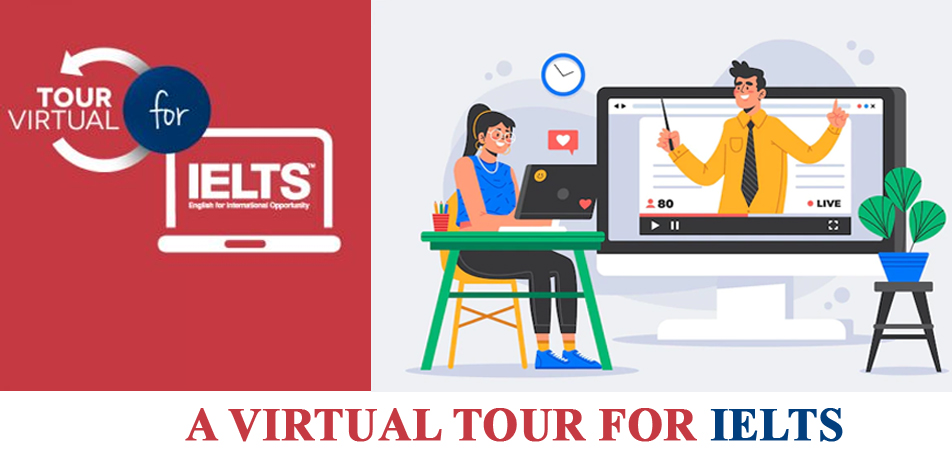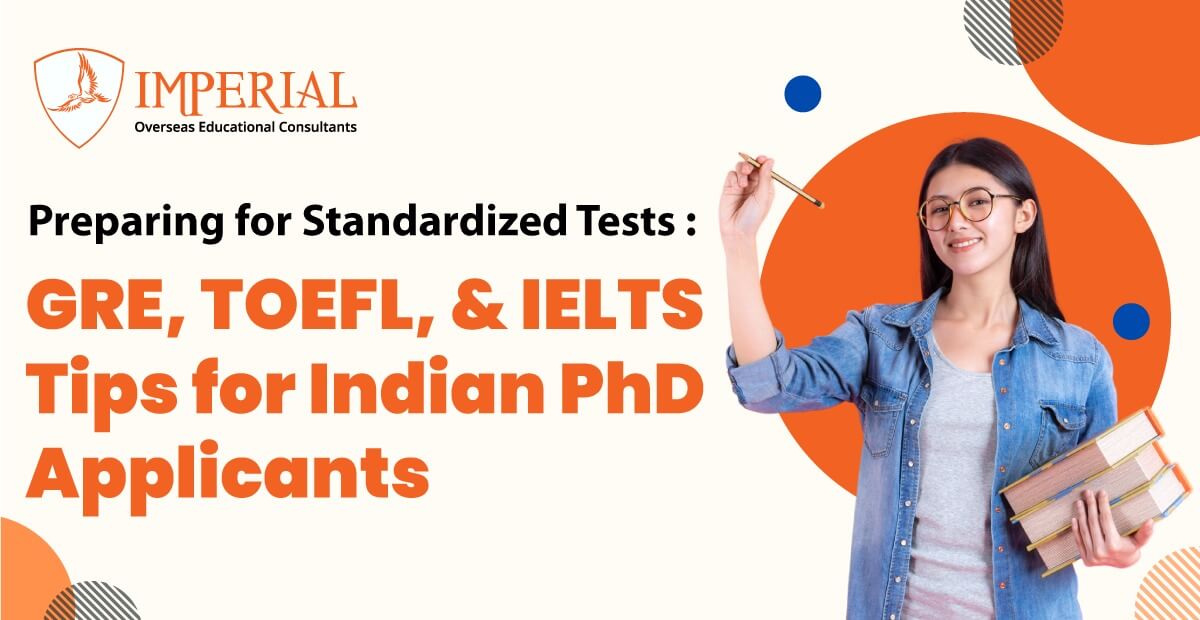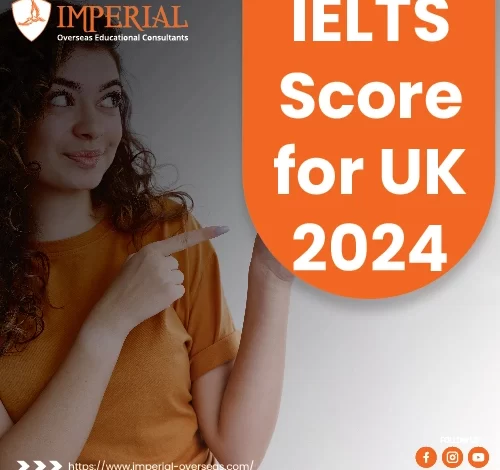
A VIRTUAL TOUR FOR IELTS

A VIRTUAL TOUR FOR IELTS – STUDY ABROAD
So what if you are not a tech-savvy? What if you are way more habituated with the British English along with an inclined love for conventional exam pattern? One of the English Language tests that would allow you to prove your proficiency and command over language, you can surely opt for an exam called IELTS.
IELTS is an examination that is globally recognized for the purpose of higher education or for immigration and is the world’s most renowned examinations with over 3 million test takers in a year. IELTS is jointly owned by the British Council, IDP: IELTS Australia and Cambridge Assessment English and is accepted by over 9000 organizations across the globe.
It is an examination that tests and assesses your skills on reading, listening, writing and speaking through a varied and mixed set of questions.
The exam has a basic of two variants – The Academic Module and The General Module.
The academic module is for the aspirants aiming for pursuing education abroad whereas the general module is for aspirants who are aiming for immigration.
TEST FORMAT
The test comprises of four sections namely Listening, Reading, Writing and Speaking without any breaks. The total time allotted for the test is 2 hours 40 minutes. Unlike all other tests, IELTS speaking section happens separately in a week’s time before or after your date of the exam.
LISTENING – IELTS TEST
This is the very first section of the IELTS test and is common for academic as well as the general module. The total time allotted for this section is of 40 minutes wherein 30 minutes are for listening to the recordings and answering questions and you would also get additional 10 minutes to write down your answers onto your answer sheets.
The entire section is divided into four sub-sections:
- The first section will have a conversation between two people on a general or a social context.

- The second section will have a lecture or a monologue based on a social or a general context.
- The third section will contain a conversation between more than two people that will have an educational or an academic context.
- The fourth section will have a lecture or a monologue based on an educational or an academic context.
This section would assess you under following aspects:
- How well do you understand the central idea?
- How well are you able to gauge the specific information?
- How well are you able to comprehend the speaker’s intention?
- How well are you able to understand the flow of speaking?
The entire listening will have a total of 40 questions that fall under the following categories:
- Multiple choice
- In most cases, students would get four options out of which one would be correct.
- In some cases, a student may be asked to select two options out of the given options.
- Map/Diagram/Flowchart/ Table completion
- Students are required to label the diagram or a map or a flowchart or a table based on the recording that they listen to.
- Sentence completion
- Students are required to complete the sentence as specified in the recording keeping in mind the instructions stated.
Each question is awarded one mark regardless of its difficulty level. This section has a total of 40 questions and is scored on the scale of 40 which is then converted into a scale of 9 bands.
READING – IELTS TEST
This section expects students to read passages from varied sources and answer different types of questions based on the passage. Passages differ based on the module the student is appearing for- Academic or General. Reading section has been allotted a total of 60 minutes in which the student has to attempt all the questions.
The entire section is further subdivided into three sub-sections; Academic module will have 3 passages divided into three sections.
The source of these passages can range from magazines, newspapers and journals.
TYPES OF QUESTIONS for IELTS TEST
- Multiple choice
- In most cases, students would get four options out of which one would be correct.
- In some cases, a student may be asked to select two options out of the given options.
- Map/Diagram/Flowchart/ Table completion
- Students are required to label the diagram or a map or a flowchart or a table based on the passage that they get.
- Sentence completion
- Students are required to complete the sentence as specified in the passage keeping in mind the instructions stated.
- True/False/Not Give
- This is the in trickiest questions in the entire reading activity. A student has to state whether the given statement is true/false or if the information is not stated as given in the question.
- Match the headings
- A student will be given with multiple headings for every single paragraph and is expected to choose appropriate headings for each of the paragraphs.
Reading Section assesses different aspects of a student:
- Whether the student is able to understand the main idea of the given passage?
- Is the student able to understand the implied meaning of the passage?
There are a total of 40 questions divided into three sections and has a total of 40 marks. Each question is awarded one mark regardless of its difficulty level which is then converted into its band equivalent.
WRITING – IELTS TEST
This section comprises of two different writing tasks. Writing section has been allotted a total time of 60 minutes in which a student has to complete both the tasks. Task 1 is different for Academic and for General Module.
This section is for 60 minutes in total wherein task 1 is allotted 20 minutes whereas task is allotted 40 minutes.
Task 1(academic)
In task 1, a student would receive a graphical or a visual representation and a student is expected to convert this graphic into words.
A good response for this task would have a word count of minimum 150.
A student is not expected to use his/her prior knowledge and should stick to what is given in the question only.
Task 2
In task 2, a student has to write an essay which is typically an opinion based essay. A student has to have his/her own opinion.
A good response for this task would have a word count of minimum 250.
Factors on which writing tasks will be graded are as follows:
- Task achievement
It deals with how well is the question addressed.
- Coherence and cohesion
It checks the level of clarity the task has and how well there is an interlinking between the paragraphs.
- Lexical resource
It deals with the kind of vocabulary and the accuracy with which it is used.
- Grammatical range and accuracy
It deals with the accuracy of grammar.
SPEAKING – IELTS Test
It involves a student and an examiner in a physical setting. This section is a two-way process lasts for about 10-14minutes on an average.
Speaking is further sub-divided into three sections
Part 1: Introduction
The examiner would ask questions based on familiar topics such as home, family, work, studies and interests. The section has a time slot of about 4-5minutes.
Part 2: Cue Card
The examiner will provide the student with a cue card that will have a particular topic and the student is expected to talk on the given topic for 2 minutes.
A student will be given 1 minute to prepare on the topic. The section has a time slot of about 3-4 minutes including the preparation time.
Part 3: Discussion
The examiner would discuss and ask questions to the student on issues based on the topic of part 2 in a more general and a social way. This section will go for about 4-5 minutes.
Factors on which speaking tasks will be graded are as follows:
- Fluency and coherence
- Lexical resource
- Grammar
- Pronunciation
More than an English language test, this test is predominately a test of practice, concentration and dedicated hardwork.
Let us help you!
Ms. Sai Dadarkar
Counselor & Trainer
Imperial Overseas Educational Consultants



